In early March I made my way to the Middle East for the ‘first’ time. The last time was a transit-turned-layover in Doha. This time I was here for good to visit dear friends in Dubai, UAE, followed by journey across Oman with Desert Flower Tours and onwards to Jordan with Inspirations Travel and Tours. That last trip was cut prematurely short because of you know what, but I digress.
Why Oman, you might wonder? It was only after I followed a fellow writer’s gallivanting across this part of the Arabian Peninsula that I began to consider Oman as a travel destination I wanted to travel to soon. I was amazed at the spectacular natural beauty from ancient mountains and coastlines ringed with islands to sweeping desert dunes and magnificent Islamic art and a culture I yearned to explore deeper. That was back in 2017. It was time.

A: Air travel, airline routes and overland public travel
Getting to Oman
Set along the easternmost part of the Arabian Peninsula, Oman is easily and quickly accessible from main airport hubs in the Middle East, such as Dubai and Doha. National Carrier Oman Airlines flies to 19 countries and operates local flights between Muscat and Salalah in the south and Khasab in the north. Airports are also located at Duqum and Sohar. Salam Air, the country’s only low-cost carrier, operates between Muscat and Salalah, as well as numerous other regional destinations. All departure taxes are already levied into the cost of flights.
If you’re looking for local flights within or international flights to Oman (once it’s safe to travel again post-COVID 19), I’ve partnered with Travelcheck to offer flight discounts. You can get ZAR750 ($40 at the time of writing, though usually $50) off international flights by quoting ‘eagerjourneysint’ in the voucher field at checkout. Feel free to read more about my Travelcheck partnership.
From Dubai I travelled overland by bus to Muscat with Mwasalat – a government-owned bus company that operates cross border routes. The service was on time, very clean and well organised – I was duly impressed. The driver saw that I was a solo female traveller and was most helpful and accommodating. He checked up on me at each of the various border crossings. There’s no departure tax from Oman when crossing land borders.

Getting around Oman
Buses
Mwasalat also operates air-conditioned public city and intercity buses between major provincial hubs for less than OR10 (ZAR489 or $26). You can buy your tickets onboard from the driver with cash, though it’s advisable to book longer journeys at the bus station, especially ahead of weekends and public holidays.
Cycling
You’d have to be slightly mad to want to cycle across Oman’s main thoroughfares during much of the year – mostly due to the high temperatures that radiate from the tar. Though while I was there in the mild of wintertime, I did see some long-distance cyclists. Just note that distances between towns and petrol stations can be rather vast, so make sure you’re prepared with all the essentials and emergency supplies. More about hiring a car and 4x4ing later in the post, as Oman is the perfect destination for a self-guided road trip.
B: Budgeting for your trip to Oman
It goes without saying that Oman is an expensive destination. Here’s the current exchange rate what with the ongoing COVID-19 situation: 1 Omani Rial = ZAR48 (usually around ZAR40) and $2.6 (there’s little volatility here as the Rial is pegged to the US dollar). One Rial is divided into 1 000 (not 100) baisa/baiza.
Travellers will be pleased to know though that all wadis (river beds and oases) are free to enter, petrol is dirt cheap in comparison to other parts of the world, and so-called outdoor or wild camping is free across most parts of the country – there are no designated caravan parks or camping grounds. Tipping is mostly discretionary and while restaurants in exclusive hotels will include a 10% service charge, it’s not common in smaller establishments. That being said, as many of the country’s main attractions are within close driving distance of Muscat, these can been explored in a short amount of time, within about five or six days.
ATMs are widespread and Visa is more popular than Mastercard; American Express is the least popular and might leverage a 5% surcharge. Foreign exchange counters are generally open between 4-7pm. Remember that the weekend falls over Friday and Saturday.
How much to budget if you’re on a ‘shoestring’ budget
A double room with a private bathroom, including breakfast during high season (November to March): less than OR45 ($117)
Standard meal (including tax and service charge): Less than OR5 ($13)
How much to budget if you’re on a medium budget
A double room with a private bathroom, including breakfast during high season (November to March): OR45-100 ($117-260)
Standard meal (including tax and service charge): OR5-10 ($13-26)
How much to budget if you’re on a high-end luxurious budget
A double room with a private bathroom, including breakfast during high season (November to March): More than OR100 ($260)
Standard meal (including tax and service charge): More than OR10 ($26)
Car hire: Expect to pay around $39/day for a sedan and $104/day for a 4×4. More about in the Car Rental section below.

C: Clothing and dress code in Oman and other Arabic countries
No matter where we travel in the world, it’s important to be cognisant of local cultures and how to dress if you’re travelling through a country that’s particularly religious and pious, such as Oman.
Women are advised to cover their shoulders with t-shirts that reach mid-arm length or to their elbows and that do not show cleavage. Skirts, trousers and dresses should cover the knees at least. A visit to a mosque will require a woman’s hair to be covered (a scarf will do), her arms to be covered to her wrists and her legs to be covered to her ankles. It’s advisable to avoid tight-fitting clothing that reveals body curves when visiting a mosque. Abayas (long, black flowing dresses) are usually available for hire at the entrance to larger mosques that can be visited by travellers.
Notice boards at the entrances of wadis, swimming sites and public beaches will illustrate appropriate dress code for swimming. Women should wear a burkini/burqini or cover their shoulders with a t-shirt and their legs with ¾ or full-length yoga pants. Men shouldn’t go shirtless and are requested to wear longer swimming trucks or board shorts rather than speedos.
D: Deserts and dunes
Within two hours of the capital city of Muscat lies Sharqiya Sands, which was previously called Wahiba Sands. The desert can easily be explored within a day trip, though I’d recommend staying overnight, so that you may experience a sunset camel ride across the shifting sands and witness the sunrise from atop the copper-coloured dunes.
From the small town of Al Wasil the road transforms into sands that seem to spill over the horizon in every direction. On our 4×4 drive to our desert camps, goats scurried across the makeshift tracks in the sand and camels walked, seemingly aimlessly to nowhere, until Bedouin settlements emerged from behind a grainy mirage
As romantic as the notion of meeting a nomadic Bedouin tribe sounds, many Bedouins no longer follow a nomadic lifestyle. Most no longer wander continuously between the sand dune corridors in search of shelter from the sand storms, nourishment for their animals and the reprieve of oases. The adoption of technology and the widespread prevalence of 4×4 vehicles means that many Bedoiun tribes can set up more permanent structures in desert, near their ancestral lands, and still have fairly easy access to nearby towns that offer all the amenities associated with modern-day life. Many still breed camels, whether for camel racing, transportation or to sell their meat and milk at the market. Some also partner with the nearby desert camps to offer sunset camel back rides and cultural exchanges.

E: Environment, ecosystems, ecotourism and wadis
Ecotourism is on the rise in Oman, especially as global demand for sustainable, eco-friendly and vegan travel experiences increases. Travellers’ choices and supply and demand, also play a huge role. Choose to traverse the desert on camel back rather than a quad bike and support sustainable turtle conservation projects that protect the well being of the animals rather than prioritise profit by allowing an unlimited number of travellers onto so-called ecotours. Hold eco-friendly and sustainable suppliers accountable by noting unsavoury activities and actions on review sites such as Tripadvisor or Booking.com.
Before I arrived in Oman, my perceptions were skewed to the idea that it was mostly a hot, dry and somewhat barren country. And I’m pleased that I was very much mistaken. Luscious wadis (so-called river beds), some of which are even perennial and flow year round, are found across the country and are within easy access of the capital city – perfect for a day trip and often a highlight of any trip to this Middle Eastern nation. Imagine cool mountain water collecting in refreshing rock pools that are shaded by date palm fronds. All wadis are free. Some offer restaurant, picnicking, drinking water and toilet facilities, while others are left in their natural state. Plus, there’s a long coastline with many opportunities to swim in the warm waters of the Arabian Sea or lounge on the beach.

F: Omani Food
Travel is incomplete without wholly indulging in the food – at least that’s my modus operandi, which often sees me gain a few kilos on each trip, but at least it’s at the satisfaction of my curiosity – and taste buds. Tap water is safe to drink in all towns, bring a water bottle that you can refill; and alcohol can be bought at hotels and restaurants with a liquor license.
Khawa – cardamom- or rose-infused coffee – is a standard part of Omani hospitality. And though served in miniature cups, it always comes in threes. Guests are usually greeted in the majlis (a communal seating area) with Khawa, which is served with dates. Their natural sweetness means that Khawa is never served with sugar. I had to remind myself to eat with my right hand as the locals do. My guide, Hilal, taught me how locals take two or three dates into their hand and squeeze them together between the thumb, forefinger and index finger so as to squeeze out the stone. Chai tea is another firm favourite and no matter the temperature, it’s always consumed hot.
I savoured another Omani delicacy at Halwa al Saifi in Nizwa. Halwa, which translates to sweet in Arabaic, is the Sultanate’s traditional dessert, as in other parts of the Middle East. It’s a gelatinous blend of flour, caramelised sugar, rose water, saffron, cardamom and almonds – though there are a number of regional variations based on available ingredients, and personal taste.
If you’re researching a trip to Oman, you’ve probably heard about Shuwa, the famous slow-roasted lamb dish that’s cooked in an underground oven. If you’re an adventurous eater then do try camel meat and dried shark. While meat, as well as fish, plays a central role in Omani cuisine, which is usually served alongside rice and various side dishes, rest assured that there are vegan and vegetarian options too, most popular of which are falafels and hummus that are served with flatbread (khubz). Dip the bread in labneh – cheese that’s made from salted and strained yoghurt and sprinkled with zaatar.
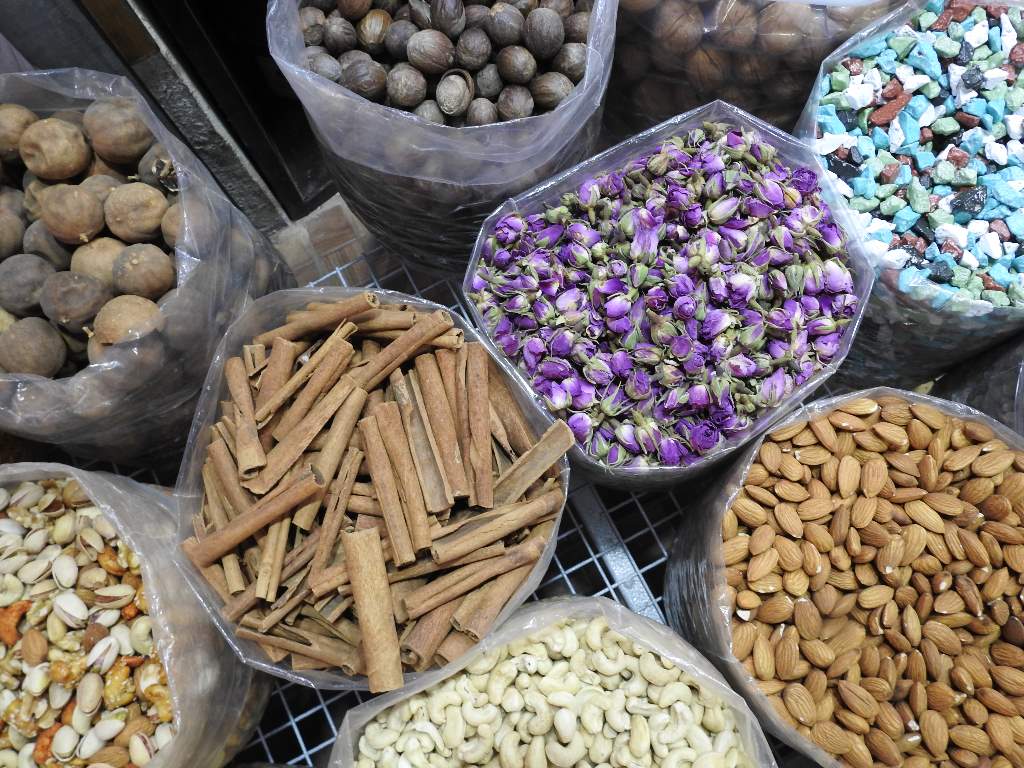
G: Geotourism in Oman
It just so happened that as were driving towards Wadi Bani Khalid from Sharqiya Sands I was posting live picture and videos on Instagram, when Chelsea Rebelo, a high school friend who is now a qualified geologist writing her Master’s, messaged me to tell me about Oman’s geological significance dates back some 825 million years.
Indeed, Oman is an outdoor geological Museum. Parts of the region’s upper mantle and seafloor were thrust over the crust, which can still be seen today. The Sultanate boasts a geological heritage – from age-old geological features, geosites and geomorphological features that are seldom found elsewhere – that makes it a very popular destination for geotourism. More than 30 geological sites fall under the geological guide project that is overseen by the Ministry of Tourism. Some of the most prominent ones include: the rock formations of Jabal Mishatt, the porous limestone deposits of Jabal Akhdhar, the Ithabat Teeq bore, which is among the world’s largest geological sites, the crystalline rocks of Mirbat, Duqm Stone Park, as well as a number of wadis.

H: The Hotels I stayed at in Oman
I was kindly hosted by Hilal Al Ghadani, co-owner and tour guide at Desert Flower Tours, in conjunction with the following hosts.
Hotels in Muscat
The Majan Continental Hotel
This centrally-located, four-star hotel is situated a stone throw’s away from Sultan Qaboos Grand Mosque in the heart of Muscat. The ochre-coloured stylish hotel is built to mimic the architecture of the many ancient castles and forts that are sprinkled across the country. The large swimming pool is located within the central courtyard, with most rooms showcasing pool-side views. While the décor boasts Omani elements from hand-carved wooden chests to traditional hand-loomed carpets and Middle Eastern artefacts. Rooms are decorated in a cosy manner that exudes warm Omani hospitality and facilities include a health club and a business centre.
If you know the first thing about me, it’s that I love hummus with a passion. I’d probably give up many things in life just to have a steady daily supply. And so, it goes without saying that no matter where I travel, even to countries where hummus is not a staple, I always order hummus. To date, the best hummus I have ever tried (and I’ve really tried hummus just about everywhere I have travelled) was at the Majan Continental Hotel. Not only did I eat hummus for dinner and breakfast but the hotel’s bountiful buffet spread was my first introduction to what I was to expect of Oman’s delectable food.
Ramada Qurum Beach Hotel
A few minutes’ walk from Qurum Beach, the Opera House and Al Masa shopping mall, within the capital city’s diplomatic district (Shatti Al Qurum district), lies the four-star Ramada Qurum Beach Hotel. It easily accommodates business travellers with its conferencing facilities for up to 70 attendees and 24-hour business centre, as well as tourists with its leisure facilities and activities, such as the heated pool, recently renovated fitness centre with a sauna and steam room.
The elegantly furnished deluxe rooms and suites cater to travellers who appreciate the finer things in life, as well as a spacious living space that will make them feel as though they are at home rather than in a hotel. The deluxe suites include a kitchenette, living area, full-equipped bedroom, extensive cupboards and bathroom. Hint: Book a room with an ocean view for the most beautiful sunsets; balcony rooms are also available. The on-site Café Noir Restaurant offered the best breakfast buffet of my stay in Oman.
Sama Resorts and Spa
I was hosted by numerous Sama Resorts and Spa properties across the country. This luxurious eco-friendly brand is leading the way with sustainability practices in hospitality in Oman, even though they still have a few technicalities to iron out to truly become a fully-fledged ecotourism brand, they are well on their way and miles ahead of local competition.
Hotels in Ras al Jinz
Sama Ras al Jinz
Ras al Jinz is the Arabian Peninsula’s – and Oman’s – eastern-most tip. It receives a cool ocean breeze, which is a blessing especially during the hot months. It’s a 2-minute drive from the Ras al Jinz Turtle Reserve (there are no other nearby accommodation options between Sur and the reserve), which is famed or its conservation work with green turtles. The Sama Ras al Jinz resort is also the perfect place for star gazing due to very little light pollution and spectacular sunsets that seems to melt into the desert sand. We also saw two camels from the neighbouring Bedouin tribes, dragging their feet along the sand into the distance.
The resort offers rustic spacious chalets (deluxe rooms) and standard rooms, both of which are built using natural resources from the surrounding region while keeping the integrity of the natural environment in mind. The covered seating area is a combination of Omani carpets and cushions where you can sit cross-legged while sipping on Khawa, as well as private couch seating areas. The restaurant serves freshly prepared set menus with a wide range of choice. Though Sama had only recently taken over the property before my stay, it was evident that they are already implementing a number of longer-term eco-friendly strategies.
Hotels in the desert
Sama Al Wasil
This desert camp is located two hours (192km) from Muscat in Sharqiya Sands, at the foot of a colossal sand dune that can be climbed (with the help of a secured rope) for spectacular views of desert sunrises and sunsets. From this vantage point, your gaze is overwhelmed by the vastness of these four parallel sand dune corridors. The beige fort-like chalets necklace the communal majlis, where guests can relax with a book and refreshments. The Bedouin-style Sultan tents offer insights into what traditional Omani way of life must have once been like. While lunch is only served on request, the room rate includes a buffet-style dinner and breakfast spread of traditional Omani cuisine as well western favourites, accompanied by live traditional music, which offers further insights into the Sultanate’s culture. Afterwards, it’s quite something sitting on your private patio admiring the desert night sky to the sound of silence.
I truly appreciated that Sama Al Wasil outsources all of their activities (camel riding, quad biking and sunset 4×4 dune bashing) to the neighbouring Bedouin tribes, so as to offer them an additional income stream beyond their day-to-day economic activities. If you want to have a light environmental footprint on this landscape’s flora and fauna, consider camel-back riding instead of motorised sports.

Hotels in the mountains
Sama Heights Resort and Spa
The drive to Sama Heights Resort and Spa along the country’s so-called rooftop offers magnificent views of its mountainscapes and highest mountain, Jebel Shams. The hotel is situated a stone’s throw away from Wadi Ghul, the so-called Grand Canyon of Arabia, where you can undertake moderate walks (W6 Balcony Walk) or strenuous day-long (W4) and multi-day hikes. The hotel’s location at 2 100masl is unsurpassable as it looks out onto Jebel Misht, Wadi Nakhr and Wadi Ghul. At this altitude, it can get quite nippy though, especially in the winter evenings and mornings, which is also why the locals come here in the heat of summertime to find some reprieve. The outdoor bon fires and cosy mountain lodge atmosphere in the restaurant are most welcoming after the sun sets.
Travellers can choose from four accommodation options – Sultan tents, Bungalows, Mountain View Chalets and Grand View Chalets. I stayed in the latter with its panoramic views from the patio onto the surrounding mountain ridges that are scattered with braying donkeys. Each of the accommodation options are constructed and decorated using natural resources. They blend into the rugged natural environment, so that it’s hard to spot them from a distance.

Sama Wakan Heritage
On the edge of Wadi Mistral (a spectacular geological feature) and within Wakan Village, an hour and a half from the capital city, high up in western Hajar mountains sits Sama Wakan Heritage. At 2 000masl, with views of the Ghubrah Bowl below, these are some of the most picturesque vistas you’ll see from any hotel in the country, especially as there’s only one road that leads to the top, which leaves much of the environment in an untouched state. This is an ideal property for nature lovers and active travellers who want to undertake day hikes along the mountains that appear to be roughly cut out of the earth with a Swiss army knife.
A partnership with families in the local community has seen traditional heritage homes renovated and transformed into en-suite guest rooms that are adorned with age-old items that hark back to a time gone by. From Sama Wakan Heritage, guests can walk through the bucolic village, along terraced gardens and ancient falaj irrigation systems to the Al Jabal Al Akhdar Scenic Reserve, which is free to enter.

I: Omani Itineraries
I’ll elaborate on these itineraries in future posts, but in the meantime, here are a few to whet your appetite.
My one-week Itinerary in Oman with Desert Flower Tours
After arriving in Muscat by bus from Dubai, I refreshed myself at The Majan Continental Hotel and undertook a guided half-day tour around the capital with Hilal from Desert Flower Tours. I eyed out souvenirs at Mutrah Souk, walked along the crescent-shaped corniche, followed by a visit to Old Muscat and Al Alam Palace, which is one of six Sultanic residences. This is where you’ll also find the National Museum and some of the many 16th century Portuguese forts that lookout from the tops of hills. I also dropped by the Royal Opera House and Sultan Qaboos Grand Mosque before dinner at the hotel.
The following morning we hit the road with visits to the Bimmah Sinkhole and a 45-minute walk to Wadi Shab, where three interconnected rock pools make for awesome swimming opportunities, followed by an overnight stay in Sama Ras al Jinz. We didn’t have any luck with the green sea turtles at the Ras al Jinz Turtle Reserve that evening, and because we had a busy day ahead we didn’t come for the dawn tour the following morning. Instead, we made our way towards the fishing village of Sur that’s famed for its shipbuilding and onwards through the mountains to Wadi Bani Khalid for a refreshing afternoon dip and a walk to its cave and along the canyon.
The desert awaited. Sharqiya Sands is popular for sunset dune bashing, camel rides and start gazing, all of which are outsourced to the local Bedouin community at Sama al Wasil, where I stayed. From there we headed westward to Nizwa to explore its 9-17th century fort, which is a national monument, as well as its UNESCO-listed irrigation systems. And then the road called us once again. This time we were heading to the rooftop of Oman towards Jebel Shams. Sama Heights Resort is located near all the action and only a few minutes’ drive from the Balcony Walk footpath along Wadi Ghul (the region’s answer to the Grand Canyon).
Next on the itinerary was the abandoned 400-year mud village of Al Hamra, which led us in the direction of Snake Gorge and a precipitous descent along single-lane dirt roads to the valley floor where Wadi Bani Awf flows. This is heaven for geologists. My geology lesson took me to Sama Wakan Heritage. The next morning I waked along the terraced gardens and orchards along 700 stairs to Al Jabal Al Akhdar Scenic Reserve. Nakhal Fort and its hot al Thowarah water springs welcomed us en route to Muscat for my final night at the Ramada Qurum Beach Hotel.
Two-week Itinerary in Oman
Shortly after arriving in Oman, I realised that I had made a huge mistake. I planned too short a visit for a country that demands at least two weeks to appreciate its natural spendour that changes so much from north to south. Extend your trip with a journey south to the second city of Salalah, that’s famed for its subtropical oasis (especially during the rainy season), Dhofar coastal lagoons, deep-sea fishing and taste of Zanzibar. It’s also the home of frankincense. On your way back, stop by the rapidly developing Duqm for insights into things to come.

J: The ‘Jebel’ mountain passes and best road trips
Some of the most fascinating roads I’ve traversed have been in Oman, which is what makes it the perfect country for a road trip, even more so if you are curious about geology and someone who appreciates nature. Hilal was patient when I continuously asked him if we could stop so that I could pop out to take a few more photographs, yet again. Sometimes, we just had to drive so that we could complete our itinerary in time and reach our next destination. On my return from Oman, I realised that I was describing Oman as a country whereby you’d be sill to sleep in the back seat until you arrived at your next destination. The off road routes and mountain passes might be rough-around the edges at times, but that’s what makes for adventure. If you’re an avid off-roader, do have a look at the ‘Oman Off Road: 38 adventurous routes’ book, which also comes with an app.
Jebel means mountains in Arabic. The ‘jebel’ mountain passes I undertook, which make for endless photographs. Here are a few not-to-be-missed routes and road trip ideas through Oman, many of which require 4×4 and competent driving skills:
- Any road that will take you to the foot of Jebel Shams, the country’s highest peak at 3 009masl, and Wadi Ghul Grand Canyon.
- The road to the so-called Snake Gorge and Wadi Bani Awf at the bottom of the valley in the eastern Hajar Mountains. This one was hands down my favourite drive of my trip.
- The roads to the region of Jebel Akhdar. Though it translates to green mountain from Arabic, it actually refers to the region that encompasses the Saiq Plateau.
- The road to soaring heights of Wakan Village (or the nearby village of Bald Sayt) along the Western Hajar Mountains.
- The 70km road between Rustaq and Al Hamra. Or the 250-km long Rustaq Loop.
- The Jebel Al Harim road to the Rawdah bowl, along the Musandam Peninsula.
- You’ll have to drive through the United Arab Emirates to get to Khasab in the northern-most reaches of the country, along the Musandam Peninsula. Note: there’s an airport here too.
- The road to the Beehive tombs, near the village of al Ayn.
- Muscat to Bandar al Khairan viewpoint.
- Muscat to Sur for romantic images of a whitewashed fishing village.
- Muscat to Sharqiya Sands. Sand, lots of it.
- Muscat to Salalah, near the Yemenese border. Note: there’s an airport here too.
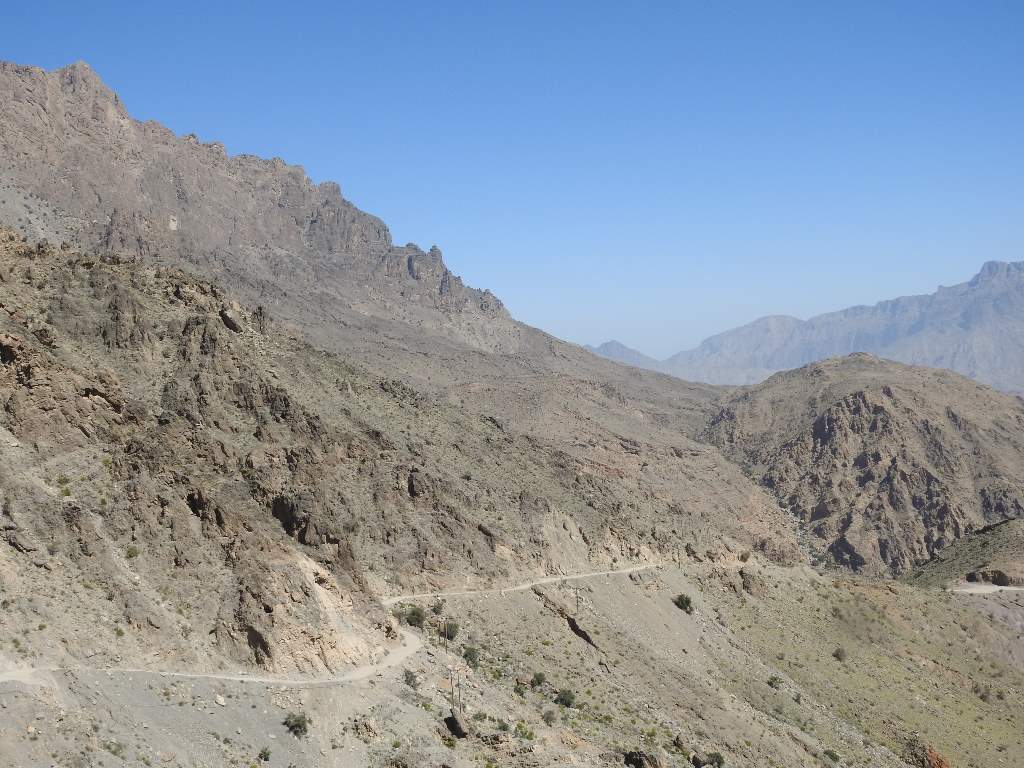
K: Is Oman kid friendly?
Oman is certainly a top-of-list destination for family holidays, especially if your children are outdoorsy and like exploring the natural surroundings, though there are many fascinating museums and forts to explore too. Don’t expect the glitz, glamour and pure over-kill of neighbouring Dubai, you won’t find amusement parks, over-the-top botanical gardens, carefully curated attractions that aim to be the biggest, longest, tallest and best. Oman is an authentic destination that offers up history, heritage and the kind of humility that is hard to find elsewhere in the region.
L: Language in Oman
While Arabic is the predominant language, education is one of the Sultanate’s main priorities, thanks to the late Sultan Qaboos, who prioritised it as one of his main goals. This means that many people are able to converse in English. Road signs are also in English as are the names of major tourist attractions.
M: Oman’s mountainscapes and hiking
Perhaps because it’s overshadowed by the huge marketing budget of its built-up neighbours, Oman blew me away with its naturalscapes. Mountain goats will love it, as it’s a hiker’s paradise with walking trails suitable for mildly fit walkers to seasoned technical hikers. Hiking season extends from September to around May, though it’s possible to walk and hike in certain areas throughout the year.
The Al Hajar mountains lie across 700km of north-eastern Oman and are the highest mountain range in the eastern Arabian peninsula. Their name translates to stone or rock from Arabic. Snake Gorge is not to be missed, though you do require a 4×4. In return it will offer insights into some of Earth’s earliest geological history through its geological folds. Do have a look at Jebel mountains passes and road trips for more ideas.
Some of the most beautiful walking hiking trails in the country include:
- The fairly easy Balcony Walk in Wadi Ghul Grand Canyon near Jebel Shams. You can also undertake much more technical, overnight hikes through this Grand Canyon of Arabia.
- The moderate Jabel Stairway Trail. You guessed it, lots and lots of stairs across a short distance (almost 8km) but climbs an elevation of 674 metres.
- The moderate 45-minute walk to Wadi Shab. There are a few sections where you have to navigate slender sections along a built-up path beneath and alongside boulders.
- A two to three-hour intermediate trek from Wadi Tiwi to Mibam village.
- A two-day hike will also take you between Wadi Tiwi and Wadi Shab.
- Explore Majlis Al Jinn, a cave said to be filled with Jinns (genies), which also holds the title of the world”s second-largest cave chamber.
- Snake Gorge hiking route. As well as the route between Wadi Bani Awf and Wadi Mistal.
- The northern and southern summits of Jebel Shams, which means mountain of the sun.
- Hikes and walks of varying difficulty levels at Wadi Dibba.
- Oman by UTMB is an endurance mountain trail race of varying distances (up to 150km) that is undertaken by the ultra fit among us, usually scheduled in November or December.

N: Nature Reserves and National Parks in Oman
The most famous one is undoubtedly the Damaniyat Archipelago, which is on the outskirts of Muscat. You can snorkel and scuba dive between these nine islands, though access is restricted during green turtle nesting season.
I visited Al Jabal Al Akhdhar Sanctuary for Natural Sceneries (free to enter) while staying at the Sama Wakan Heritage. Countless stairs lead to the reserve’s plateau from where you can observe wadi Mistal below, the village of Wakan, its many garden and terraced orchard and farms, as well as the surrounding natural landscape.
Qurm Nature Reserve protects a 100ha+ mangrove that lies within the capital city. It’s a Ramsar wetland that’s home to over 194 bird species and over 40 fish species that live between its root network.
As Saleel Nature Park in the Sharqiya region covers are area of 22 square kilometres and is home to red foxes and Arabian gazelles among other indigenous animals. Keep you its about you to spot a Al Senma, the Omani wild cat.
Jebel Samhan Nature Reserve, located within the Dhofar Mountains, is one of the last refuges of wild Arabian leopards. Keep you eyes open for Arabian wolves, Nubian ibexes, Indian crested porcupine, caracal and striped hyena.
Eight of the Dhofar Lagoons spread across the Dhofar Governorate, near Salalah, have been designated as nature reserves. Some of these so-called Khawrs (or coastal lagoons) span a diametre of a couple of hectares, while others cover hundreds of hectares. And certain reserves boast ancient ruins. In the winter time, these lagoons welcome flocks of migratory birds from Africa, Europe and India.
Forty-five kilometres south of Muscat lies, Wadi Sireen Reserve is habitat to the rare Arabian Tahr with its backward-arching horns. It is only found in Oman along the Arabian peninsula, within the Hajar Mountains, which truly makes it a special sighting.
O: Outdoor or wild camping across Oman
Oman is synonymous with road trips and outdoor or wild camping. This is also the ideal way to save some money if you’re on a budget, as camping is free – there are no designated camping grounds with ablution facilities or power outlets in Oman. This means that travellers can set up their camping gear pretty much anywhere, besides protected nature reserves, in wadi river beds (there’s always the risk of flash floods), or too close to villages. Hilal told me that until quite recently camping in the desert was allowed, but is now prohibited due to the large amount of waste left behind by campers, which is particularly harmful in this environment. The key consideration is being responsible while adhering to the seven leave no trace principles of camping.
P: Photography tours in Oman with Desert Flower Tours
With such diverse environments, colourful landscapes, elegant architecture and lively towns, the Sultanate is the perfect holiday for avid photographers. Desert Flower Tours has several international photography partners that specialise in photography workshops across the country, suited to your skill level, whether you’re a novice still learning how to use your manual camera or a season photographer. They’ll take you on a journey to the most splendid corners of the country from aquamarine waters that are dotted with an archipelago to red desert dunes, sparkling wadis and ancient forts. These tours will also give you insights into everyday life in this part of the Middle East, as you meet with the locals in the villages.
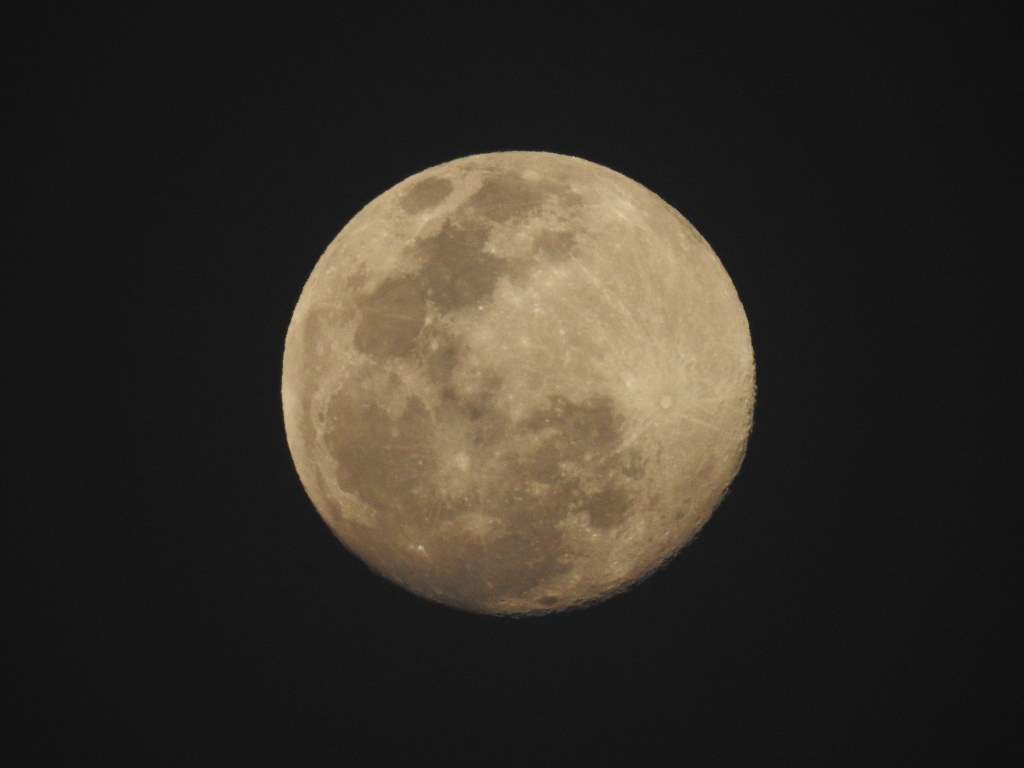
Q: How did Sultan Qaboos? influence modern-day Oman?
The late Qaboos bin Said was the Sultan of Oman for close to half a century, from 23 July 1970 until his passing in 10 January 2020. This gave him the title of the longest-serving leader of the Arab world. He is revered for the drive to modernised the country in numerous ways by commissioning the widespread construction of paved roads, prioritising education, healthcare and communication networks. Slavery was abolished under his rule.
Qaboos bin Said also ensured that women have equal rights to men in Oman. Unlike in many other Middle Eastern countries they can vote, own land, study, drive, don’t need to be chaperoned in public and hold positions in parliament. Article 17 of the Basic Law states that all citizens have equal rights and bans gender-based discrimination, of course, it’s not perfect (point me in the direction of a country that is) and there are many aspects of the culture that westerners may not understand, but it certainly sets an example within the region.
Muscat’s Sultan Qaboos Grand Mosque was inaugurated in 2001 to celebrate the late Sultan’s third decade in power and holds his name. It has capacity for 20 000 worshippers and lays claim to the country’s tallest structure – a 90-metre high minaret – as well as what was once the world’s largest chandelier. It’s gold-plated, trimmed with Swarovski crystals, houses 1122 bulbs, has an eight-metre diameter and weights 8.5 tonnes. While the hand-made prayer carpet took four years to complete, weighs 21 tonnes and has 1.7 million knots. Impressive, I’d say. The mosque is a must-see when in Oman and may be visited by travellers who are appropriately clothed.

R: Car Rental in Oman
If you’re not opting for a guided tour like I did with Desert Flower Tours then the best way to travel across Oman is by hired car rather than public transport, unless you’re on a tight budget and have a lot of time. Not only are international car rental companies widespread (Avis, Budget, Europcar, and Thrifty) as are local car hire companies, but the price of petrol is quite affordable, as in most other Middle Eastern countries, even though Oman is not a large oil-producing nation, like its neighbours Yemen and the UAE. Hilal and his team can also help you with reliable car rentals and a qualified driver, if you need one to undertake the more hair-raising off road routes.
You’ll need an international driver’s license and hiring a sedan in Oman will set you back around OR15 ($39) per day, while a 4×4 will cost you around OR40 ($104) daily. It’s really well worth getting a 4×4 if you’re expecting to leave Muscat. And with it will come the freedom to go off-roading along rough rocky terrains and disappearing desert pathways – just make sure that your car insurance covers bundu bashing, and keep a look out for camels and goats crossing the road, especially if you’re driving while it’s dark. I always get comprehensive car insurance for peace of mind. It goes without saying that it’s illegal to talk on a mobile phone while driving or to drive under the influence, but something that I didn’t expect was that you can be fined OR5 ($13) for driving around Muscat with a dirty car, so be sure to clean it after your off-roading adventure and before you explore the capital on four wheels.

S: Safety while travelling across Oman
Though I was with my tour guide, Hilal from Desert Flower Tours most of the time, even when I was by myself I found the locals to be very generous and respectful, much more so than in some Asian and European countries I have travelled to. Crime rates are low and all the guidebooks and articles I read seemed to concur. Don’t take photos of people in public, especially women, without their permission. And as always, it’s important to take safety precautions no matter where you travel.
I felt that Oman was a very safe country to travel to as a solo female traveller and it’s very highly unlikely that you’ll be harassed by the locals, but do dress respectfully. If you’re travelling with a romantic partner, keep your overt romantic affections to your private hotel room, as it might be distasteful to the pious locals.
Oftentimes, the Middle East’s reputation precedes it when it comes to travel. I’d go as far as saying that Oman in the Switzerland of the Gulf region, especially as for the most part it does not engage in military interventions, but rather chooses to mediate regional disputes.
T: Green Turtle Conservation
Ras al Jinz, on the easternmost tip of the peninsula, is Oman’s foremost turtle nesting site, though there are other places where you can spot green turtles too, especially around the Damaniyat archipelago. The Ras al Jinz Turtle Reserve is a protected area that sees around 20 000 female green turtles return to these beaches, the very same ones where they were born, to lay their eggs. They do so in the dead of the night, which means you’ll need to join an eco night tour that goes out in batches of people, so as not to overwhelm the turtles with our numbers. While most people left after about an hour or two of waiting, we held out in hope and waited for about three hours (until 11pm), in the seated waiting area. Though I was there in March and we didn’t see any turtles, I heard from someone else that they saw two green turtles just a few days later.
If you see anything untoward, such as excessively large groups of people going out in search of a single turtle, shining lights in their eyes, touching them or causing them distress in any way, make sure you report it to your guide and at the reception or booking office. If a turtle is distressed she will go back into the water without laying her eggs, which is critical to their survival. Also mention any untoward behaviour online on review websites such as TripAdvisor – that’s often the only way we can hold ecotourism outfits accountable to do the right thing and only undertake responsible tourism practices.
“So, when is the best time to see a green turtle?” you might ask. Nesting season reaches its peak in July. During this time up to 100 females might come onto the shores within a night. The laying and hatching season covers the period between September and November, which means you might be lucky enough to see both. There are a few sightings here and there at other times, it’s said that on average one turtle comes ashore each night. Full moon nights offer betting sightings, due to the lunar light, though turtles do prefer darker nights. If you didn’t see the turtles the night before, there’s also a chance to go the following morning at dawn, around 5am, when there are also fewer travellers.
U: UNESCO World Heritage Sites in Oman
There are five cultural UNESCO World Heritage Sites sprinkled across the length and breadth of the country, with seven others on the tentative list. The one you’ll hear about (and probably encounter the most) are the five types of Aflaj irrigation systems, namely: Falaj Daris, Falaj Khatmein, Falaj Al Jeela, Falaj Al Malki and Falaj Al Muyassar. They are usually located within and on the outskirts of older settlements and most of the ones that I saw were still in perfect working order or had been renovated and were still in everyday use.
The ancient city of Qalhat is a seaside settlement along the East Arabian coastline that was a major seafaring port for pearls, dates, horses and incense from the 11th until the 16th century. It’s surrounded by an inner and an outer wall and showcases necropolises.
Then there are the mind-bending archaeological sites of Bat, Al-Kutm and Al-Ayn that are best known for their beehive-shaped stone tombs. These prehistoric settlements (complete with watch towers and irrigation systems and necropolises), located in the interior of the country, date back to the 3rd century BC.
Bahla Fort that was built on the site of Bahla oasis near the foot of Jebel Akhdar mountains stands tall as an archaeological remnant of the regional Banu Nebhan tribe that dominated these lands from the 12th to the 15th century and controlled the frankincense trade. Though it was originally made of unfired mud bricks with straw, it was splendidly restored and reopened in 2012.
The Land of Frankincense is a site along the Incense Road that demarcates the trading routes from yesteryear, remains from a caravan oasis (Shisr/Wubar) as well as the ancient strategic ports of Khor Rori village. The Boswellia Sacra trees at Wadi Dawkah, from which aromatic resin frankincense is collected, were at the centre of this frankincense-growing and trade region that dates back some 5 000 years.
V: Getting an E-visa for Oman
You can apply for your visa online through the government website for yourself or on behalf of someone else. Make sure you note any special requirements you might need depending on your nationality. Your visa can be sponsored by a local, if you’re travelling to visit them, or by your tour agency, if you’re a traveller. Citizens of the EU do not need a sponsor for their tourist visa and citizens from India, China and Russia do not require a visa at all.
The website allows you to track your application process. My visa, which was granted through my EU passport, arrived by email with 12 minutes of my application, however the average processing time is four days. If you’re crossing a land border or arriving at an airport, you need to have your visa documents with you. There might be some special exceptions for overland crossings, whereby a direct application might apply, but I’d recommend applying beforehand regardless. A sponsored tourist visa is valid for three months before use, while an unsponsored one is valid for a month.
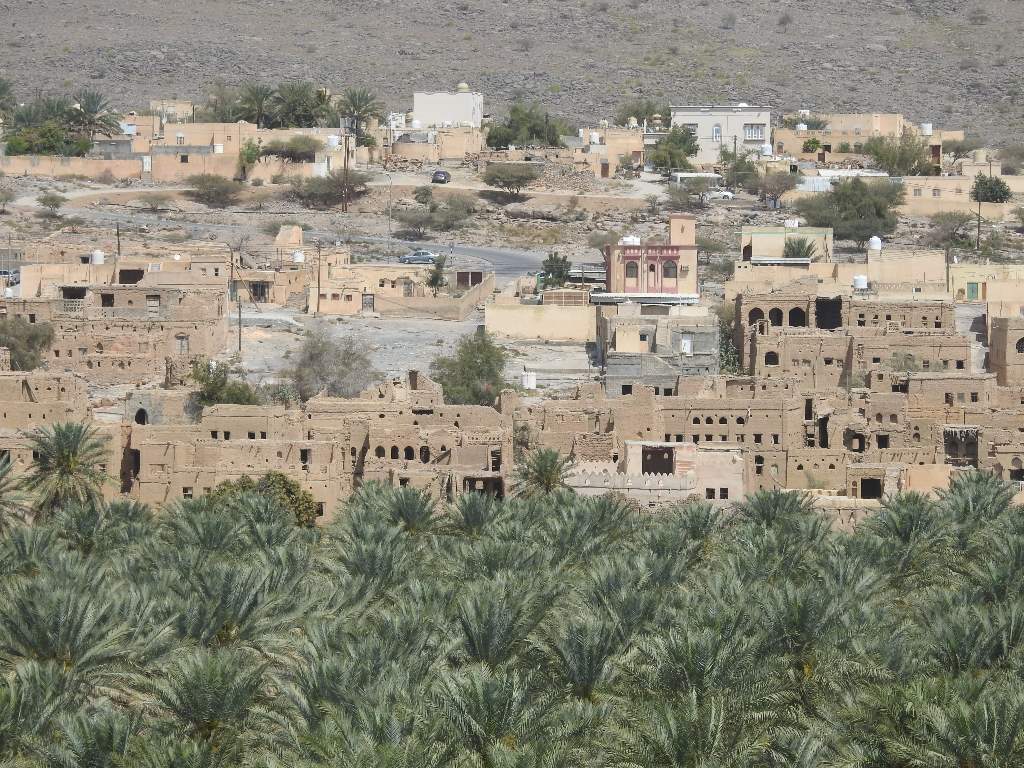
W: Weather and when to visit Oman
I visited Oman in early March and the weather was ideal – not too hot, nor too cool, and the humidity was temperate too. If you struggle with temperatures in hot and humid climates, especially when you have to dress conservatively, it might be best to travel during the wintertime.
The cool, tourist high season stretches from November to March with temperatures averaging around 20°C (68°F). Rainfall is at its highest in January and December, followed by February.
If you love to travel for festivals and cultural events, then the Muscat Festival takes place in the beginning of the year, from January to February. While the Salalah Tourism Festival occurs between July and August to celebrate the rainy season in the southern parts of the country, in Dhofar.

X: 4x4ing and road tripping across Oman
Oman is certainly a country that’s very well suited to a road tripping adventure – the roads and highways are in tip-top condition, English road signage is pervasive, car hire is affordable once you factor in that petrol is dirt cheap. Plus, if you use Muscat as your base, you’ll soon discover that there’s much you can explore within a few hours or day trips of the capital city.
If you’d prefer not to navigate via GPS, figure out which roads are the most picturesque and where you must stop along the way, then it’s best to take a guided tour, where all your interests and preferences will be considered as you road trip around the country. While this can’t be said about all countries, Oman was one of the most picturesque countries I have ever travelled to and that’s saying a lot considering that I spent a week traversing the central stretches of the country. There’s still so much to see in the north and south. Regardless, I constantly had to ask Hilal to stop so that I could jump out of our 4×4, so that I could take far too many photos of the craggy Al Hajar Mountains, azure coastline and desert dunes.

Y: Why visit Oman?
Need I say more?
Z: Zanzibar and its links to Oman
In the 17-19th centuries Oman was a strong maritime power with a strong presence along Indian Ocean routes. Zanzibar was under the rule of the Portuguese until the Omanis sent them on their way in 1698 to take control of this island in the Indian Ocean. In 1840 Sayyid Said Bin Sultan Al Bu Said (who was the Sultan at the time) moved Oman’s capital from Muscat to Zanzibar and encouraged many Omanis to relocate there, so as to grow cloves to further strengthen their trading power. After the Sultan passed in 1862, Zanzibar and Oman become separate sultanates and each one was ruled by one of his sons. Once Zanzibar became a protectorate of the British empire in 1890, the Omanis lost much of their influence on the island, however today you might still see people of Omani heritage and in Omani clothes walking the streets of Stone Town.
PIN IT FOR LATER
Disclaimer: I was hosted by Desert Flower Tours in conjunction with the following partners: Majan Continental Hotel, RamadaQurum Beach Hotel and Sama Resorts and Spa. All editorial opinions expressed are my own, but you already know that. ;)






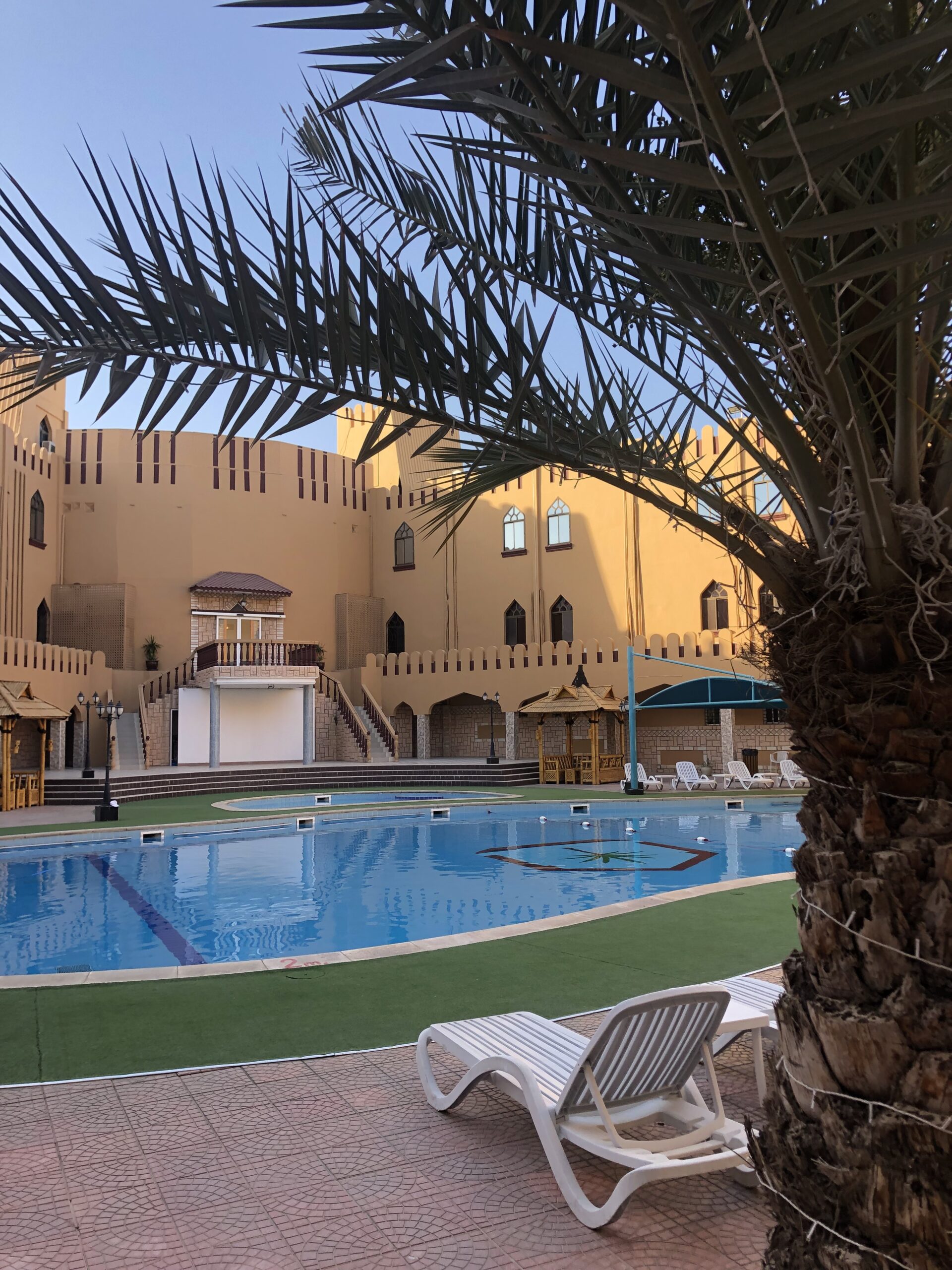

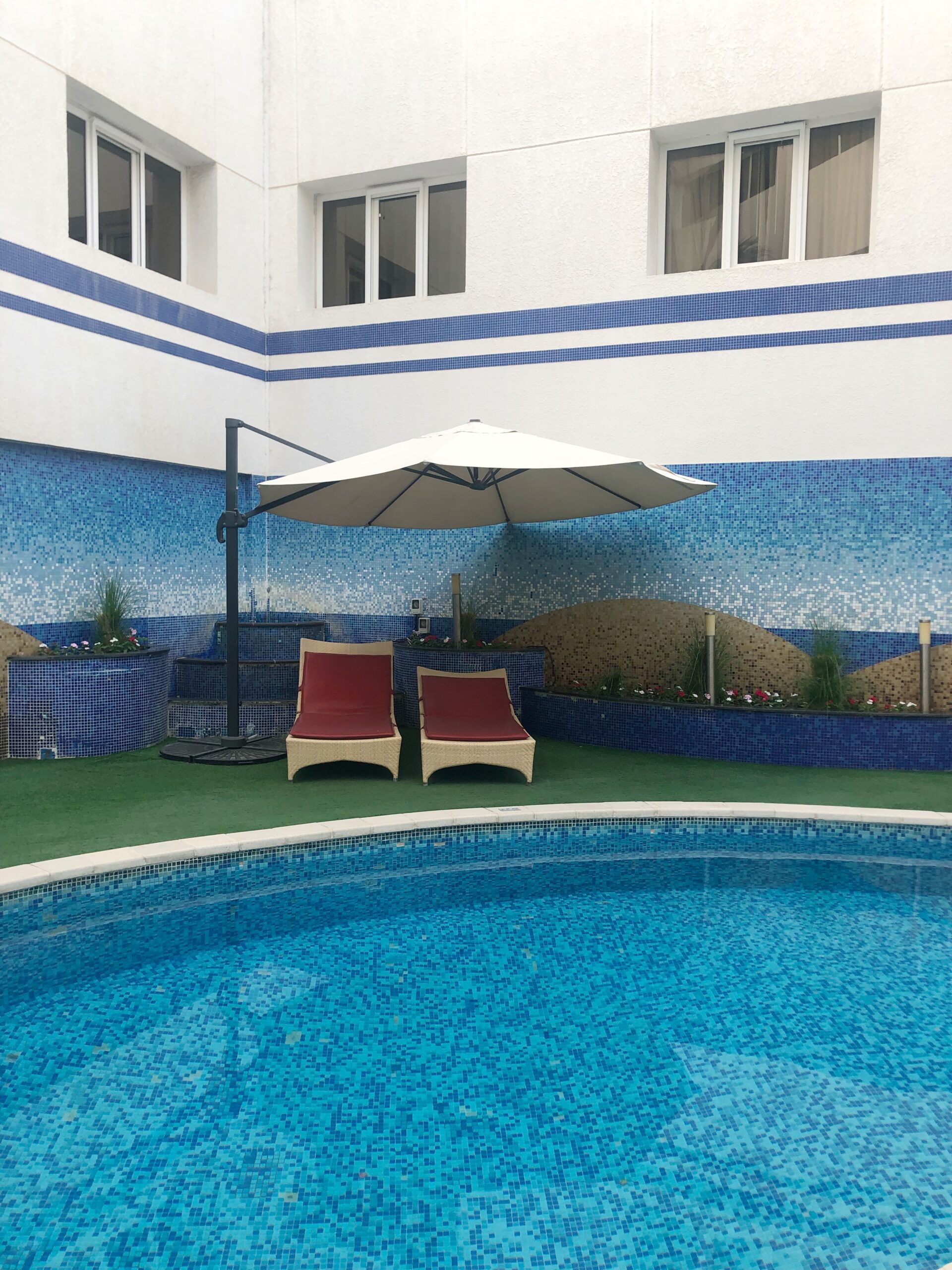

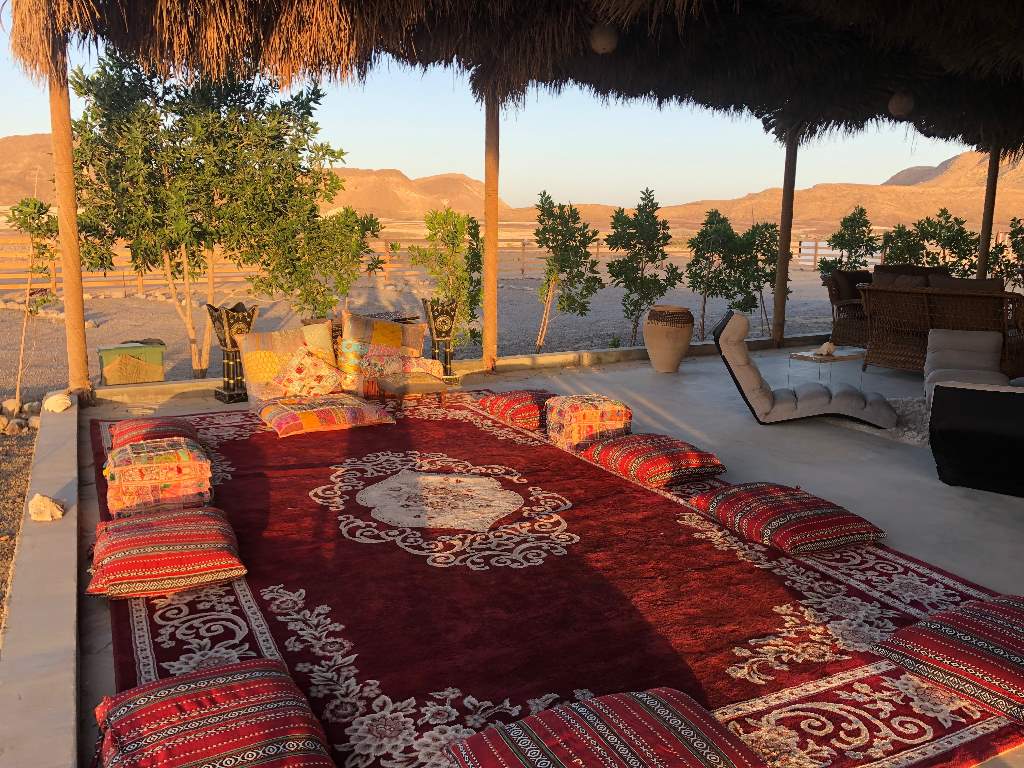
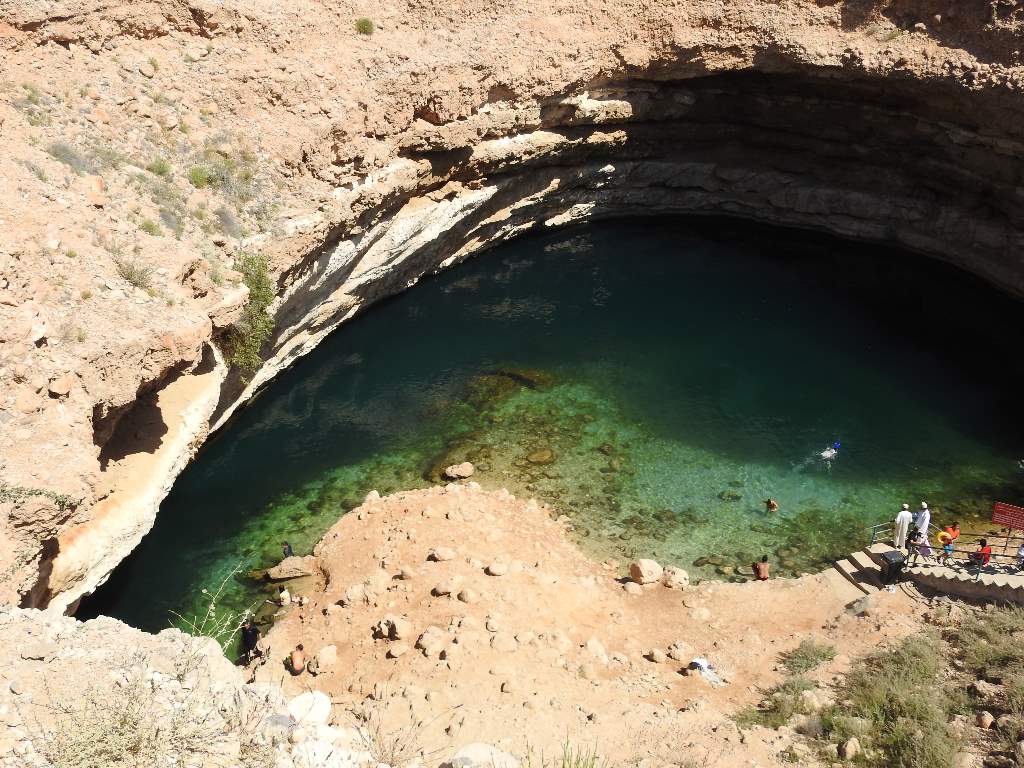

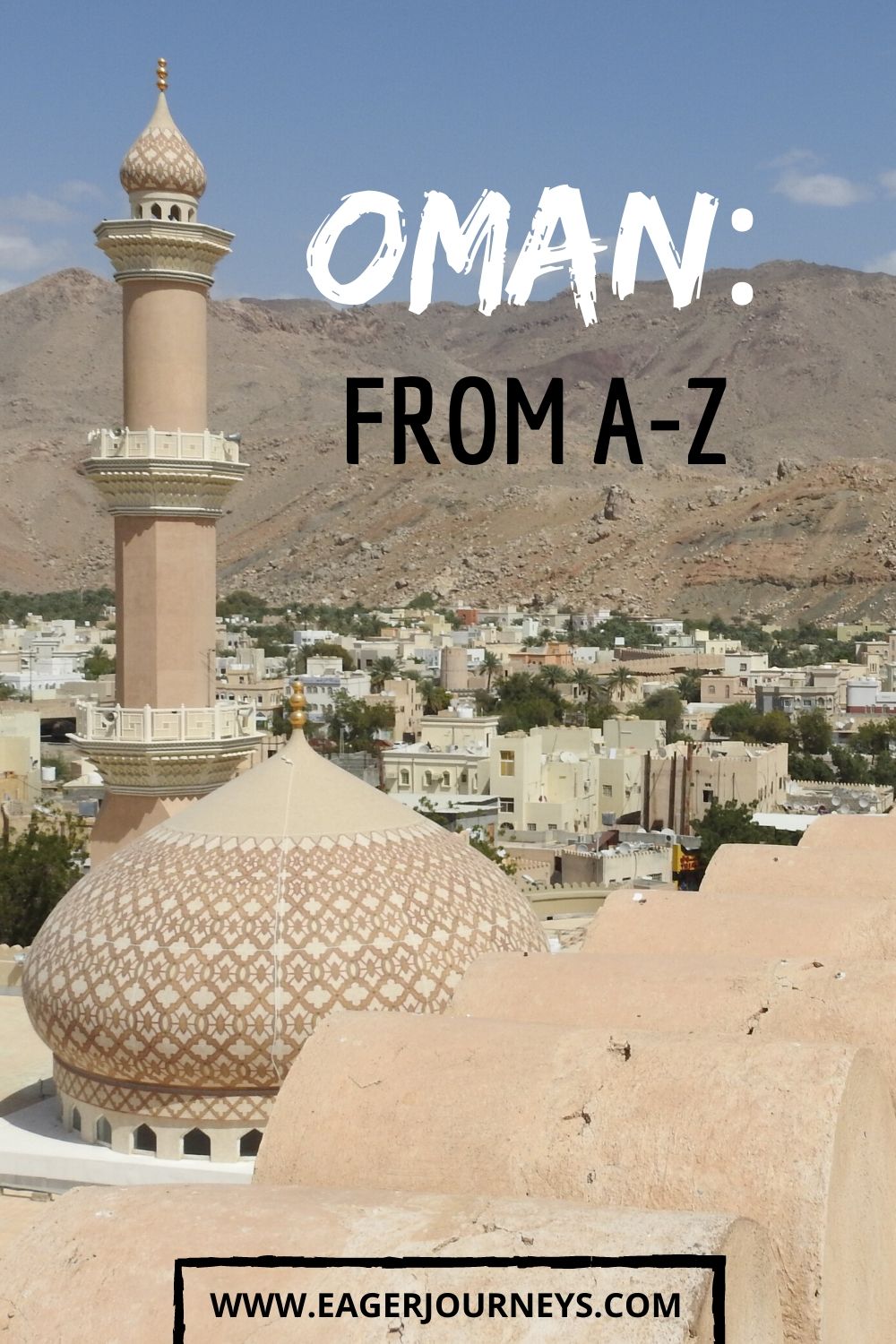
Wonderful blog. It’s one of the detailed information I have read about traveling to Oman. I am in love with all the beautiful photos. Thanks for sharing this detailed and informative article :)
You’ve really covered everything. I’d love to visit Oman, and especially stay in some of those hotels in the mountain.
This is such a fun and creative way to do a destination guide! I love that Oman is also becoming a super sustainable destination, that’s so awesome!
I’m so intrigued by this destination. You captured it beautifully and I hope I can visit it myself one day!
Such an informative guide to Oman. Oman has been on my bucket list for awhile and now I am dying even more to go. Thank you so much for sharing this post. Pinning so I have it handy when I go.
This is very uniquely written and very informative post. Oman is totally on my list and I would love to go.
I’ve always dreamed of visiting Oman! Now that I heard how costly it can be there I’m a bit scared but I’d still love to visit, at least for a short time.
Oman is on the TOP of the list of places I’d love to visit & I’m definitely saving this post for future reference!
Oman is definitely somewhere I want to go once we are able to travel again – the wadis and the Islamic art in particular interest me. Thanks for this massive guide, I will save it for when I make it to Oman one day.
Love this! Oman is definitely on my bucket list now :)
That’s so awesome to hear, Lauren! :) Let me know if you have any further questions! :)
I love the creativity of this post! I never thought of visiting Oman, but you may have convinced me, especially knowing it’s safe for solo female travel :) Also, that’s so crazy that you get a fine for driving a dirty car! To be honest, I almost never have rented a car while traveling- it stresses me out with how much can go wrong! Do you think public transportation is a safe option for a female solo traveler, or would you recommend renting a car?
If you don’t feel comfortable renting a car from the outset, I would not recommend it, as distances between towns can be quite far, even though the infrastructure is in very good condition. Most people choose this option due to the freedom it offers to explore off-the-beaten-track places and the chance to try wild camping. Public transport is definitely a safe, cheaper and viable option, even if it does take a little longer what with waiting and driving times. The culture and respect shown towards women, even travellers, in general made me feel safe. The Mwasalat bus driver (which is a government-owned company) offers frequent intercity and international routes. During my bus trip from Dubai and Oman, the driver checked up on me at each of the border crossings as he saw that I was travelling alone.
I love the A to Z style of this post, fun and informative! I never knew that Oman had such an incredible turtle conservation program. I would love to participate in something like that one day.
And it’s encouraging to see that both the government and private entities are involved in turtle conservation and there’s also an understanding of how this sustains tourism. What’s better yet is the chances of seeing one during a snorkel or scuba diving in Daymaniyat Islands Nature Reserve are really high! ;)
One of my top bucket list items for Oman is staying in a desert hotel! You did such an amazing job putting all these tips and tricks together – definitely saving for my future travels! Thank you!
It’s so important to choose a sustainable desert camp to stay at as the environment in that region is so delicate. You will love the sunsets and sunrises, it’s really quite an experience when you can see nothing but sand in every direction. Thanks so much, Yara, I’m happy to heat that it’s helpful. :)
Wow, just stunning! Such a great guide! :)
Yip, Oman turned out to be much more beautiful than I expected while I was research my trip! :)
I love how everything is in alphabetical order!! This is such a unique and detailed post. I don’t know much about Oman, but now I feel like I got a try glimpse into the country. Thank you!